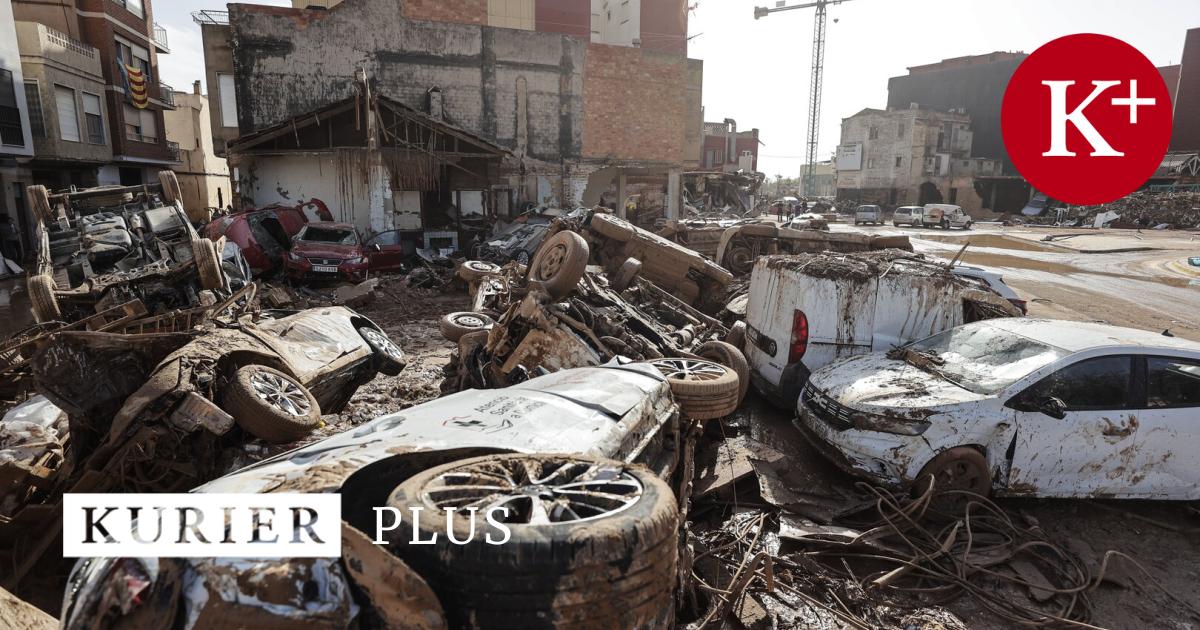Dozens of people died in the severe storms in Spain. Climate change is increasing such extreme weather.
By Julia Macher, Barcelona
A thick layer of mud covers the streets. In the depressions, cars are stacked on top of each other like toys. There are cages with some dead chickens on an abandoned truck on the A7. 36 hours after the great flood, the extent of the catastrophe is only gradually becoming apparent. At least 140 people died in the severe storm in the Mediterranean region of Valencia and in Castilla-La Mancha in central Spain.
And many are still missing. Spanish television switches almost every minute to people who are still missing their relatives. Rosana is looking for her 80-year-old mother, who was supposed to be evacuated from her village just before the floods hit. Since then there has been no trace. Jorge misses his wife, who wanted to visit friends with their daughter.
Flash floods with extremely destructive potential
Tuesday evening, the region’s roads turned into raging rivers in just a few minutes. The masses of water swept away trees, containers, bridges and entire houses. The extreme rainfall was caused by a so-called DANA or cold air drop. Warm, moist air is surrounded by layers of cold air. This cushion created inside stores a lot of moisture. It cools quickly, dropping enormous amounts of rain in a very short space of time. In the town of Chiva west of Valencia, 445 liters of water fell per square meter – as much as usual in a whole year.
The phenomenon is not unusual for the Mediterranean zone. But according to a study by the Polytechnic University of Catalonia, the intensity of rainfall has increased over the last 50 years as quadrupled. The main reason is the rising temperatures due to climate change: the warmer the air, the more moisture it can store – and the more intense the cloudbursts become. “The cold air drops in the Mediterranean region now have the same destructive potential as hurricanes in the Caribbean,” says Jorge Olcina, director of the climate observatory at the University of Alicante. “We urgently need to adapt our protocols and behavior,” says Olcina. But the administrations are having a hard time with this.
Wrong crisis management?
The Spanish weather service Aemet had already raised the highest alert level on Tuesday morning and warned of “extreme danger”. But it wasn’t until shortly after 8 p.m. that the cell phones of the city’s residents began to beep. The region’s civil protection agency sent a push message urging Valencians to stay at home because of the storms. But by then, streets in the surrounding villages had already turned into raging torrents, and truck drivers and motorists were surrounded by masses of water. “If we had received the tip-off just two hours earlier, many people could have saved themselves,” a sobbing man tells a television reporter.
The central government has now sent 2,500 police officers and 1,100 military disaster relief workers to the region. The regional government has provided 250 million euros in emergency aid for the victims.
Incorrect urban planning as a structural problem
It is still too early to assess the damage. But the extent of the catastrophe draws attention back to a well-known structural problem: the Spanish Mediterranean coast is too densely built-up to be able to shoulder the challenges of such extreme weather: residential areas are crowded together with holiday villages, and in some cases the beach promenades of one town merge directly into those of the neighboring village. “The water simply has no place to drain,” says Carles Ibáñez from the Catalan Institute for Climate Resilience.
The amount of water that rivers carry in the Mediterranean is extremely dependent on the weather. In summer there is often only a thin trickle running towards the sea; In autumn and winter, however, the river swells. If you build too close to the bank, flooding can have catastrophic consequences. Because on sealed ground, the water rapidly increases in speed and therefore in force, thereby multiplying its destructive potential. In the provinces of Valencia, Alicante and Murcia alone, 280,000 apartments are built on land that is geologically considered floodable. Many of them have now been destroyed by flash floods.
